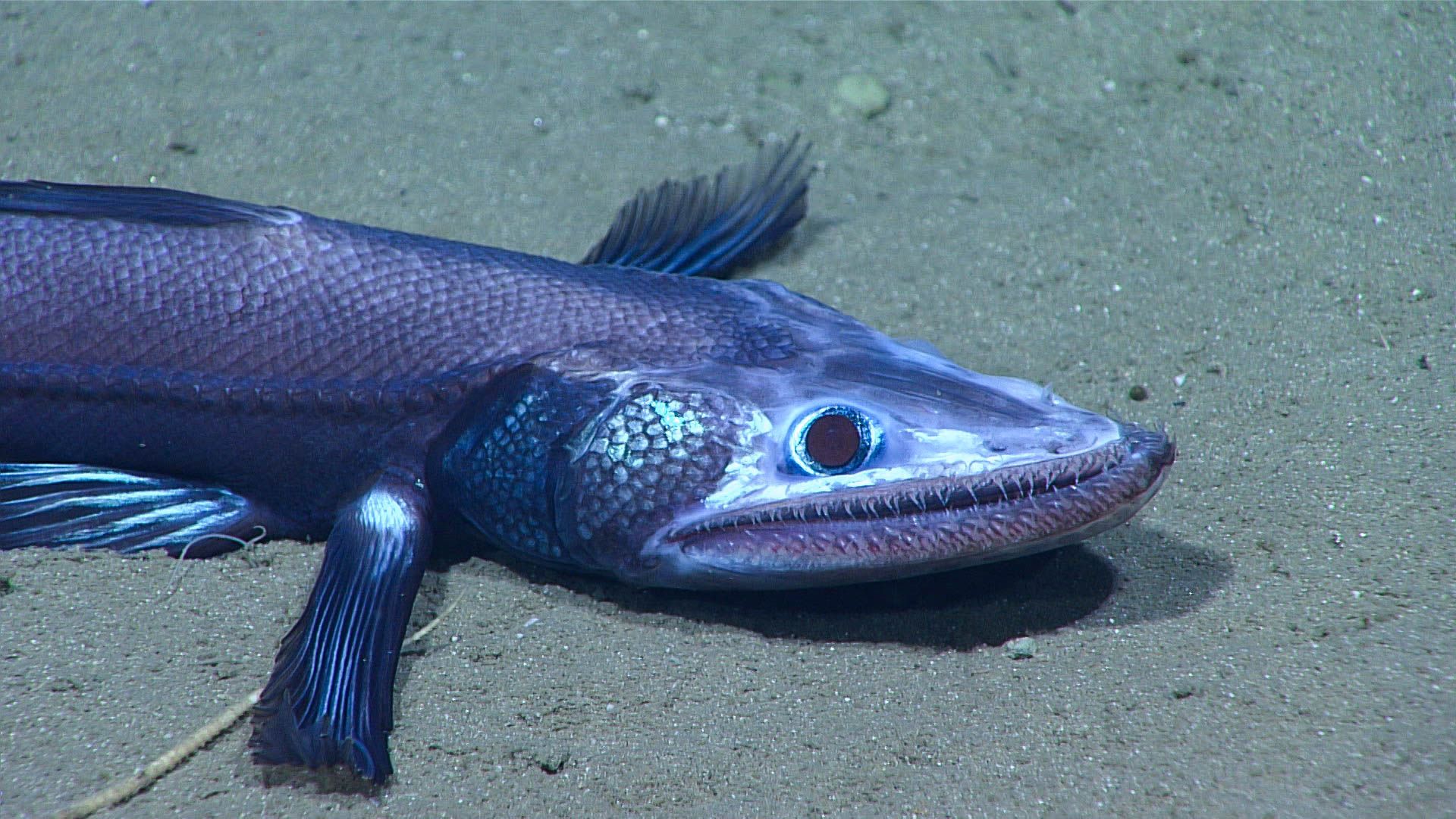
Scientists on the ship Okeanos Explorer captured a breathtaking glimpse of sea life during an expedition that ended last week off the coast of the southeastern U.S. One of the last animals they spotted, the deepsea lizardfish, could only be described as a creature straight out of science fiction.
On one of the final days of the month-long expedition, biologists from the National Oceanic and Atmospheric Administration (NOAA), laid their eyes on a deepsea lizardfish, also called the bathysaurus ferox. The animal, known to have both male and female organs, rested 5,810 feet below the surface of the water.
During one of many dives on the expedition, aptly called Windows to the Deep, the scientists photographed the lizardfish as it sat motionless on the ocean floor with prickly teeth jutting out from its mouth. It's an animal that can grow to over two feet long and appeared fluorescent under the camera's light. National Geographic once described it as "a rarely seen horror" with "haunting black eyes."
What'd you have for breakfast?! Many instances of deep-sea feeding seen during #Okeanos Windows to the Deep 2018 dive; full video here: https://t.co/84DAXlfQMR pic.twitter.com/WGBu46POLF
— NOAA Office of Ocean Exploration & Research (@oceanexplorer) July 3, 2018
Photographs of the animal and other sea life were taken during the NOAA's mission to investigate the poorly understood waters of the U.S. Southeast Continental Margin, which stretches from Florida to North Carolina.
During their trip, the researchers also observed a myriad of marine life, like the Atlantic Midshipman, a fish with one of the fastest strikes in the ocean. A photo of the animal shows his head, barely visible, poking out from the ocean floor as it waits for prey to pass by.
"These fish are sit-and-wait ambush predators, like anglers and lizardfishes, and have some of the fastest strikes of any fishes. So fast that it takes super slow motion video to actually see what is happening," the NOAA scientists said in a statement.
The researchers also stumbled upon an ocean sunfish as it swam 1,102 feet under the water's surface, where they were able to photograph this species for the first time in this region.
A never-before-seen anemone was also documented at more than 6,000 feet on the ocean floor.
In some instances, scientists used a remotely operated vehicle to take photographs of the sea life.
As the journey came to a close on July 2, the ship docked in Norfolk, Virginia, to prepare for the next expedition after scientists spent more than a month mapping and exploring deep water habitats.
Uncommon Knowledge
Newsweek is committed to challenging conventional wisdom and finding connections in the search for common ground.
Newsweek is committed to challenging conventional wisdom and finding connections in the search for common ground.
About the writer
Lisa Spear is a science writing fellow at Newsweek. She's previously contributed to a number of other outlets including Time and ... Read more
To read how Newsweek uses AI as a newsroom tool, Click here.








